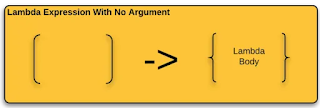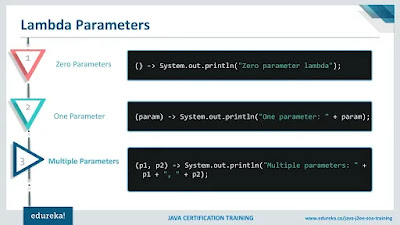Lambda Expression in java
An anonymous function, often known as a function without a name, can be succinctly expressed in Java using a lambda expression and can be stored in a variable or passed around as a parameter. Java 8 brought in lambda expressions to better support functional programming paradigms.
Why we use lambda expression in java?
Code Reusability and Maintainability: Lambda expressions promote code reusability by encapsulating behavior into functional interfaces and lambda expressions. This leads to more modular and maintainable codebases, as common behaviors can be reused across different parts of an application.
Passing Behavior: Behavior can be easily passed as a parameter to methods using lambda expressions. This is especially helpful in situations when you need to specify distinct actions for processing collections, managing events, and callback methods.
Short and Easy to Read Code: Compared to explicit functional interface implementations or conventional anonymous classes, lambda expressions enable writers to write shorter and easier to read code. This saves boilerplate code and improves code readability.
Overall, lambda expressions in Java are used to enhance code quality, expressiveness, and maintainability by providing a modern and functional programming approach within the Java language.
What is functional interface?
If a Java interface contains one and only one abstract method then it is termed as functional interface. This only one method specifies the intended purpose of the interface.
Functional interfaces are fundamental to leveraging functional programming concepts in Java, providing a way to treat functions as first-class citizens and enabling more expressive and concise code using lambda expressions.
How to define lambda expression in Java?
- Argument-list: It can be empty or non-empty as well.
- Arrow-token: It is used to link arguments-list and body of expression.
- Body: It contains expressions and statements for lambda expression.
Parameter syntax in lambda expression:-
- No parameter syntax expression
- One parameter syntax expression
- Multi parameter syntax expression
1. No parameter syntax expression-
A lambda expression with no parameters represents an anonymous function that takes no input parameters.
2. One parameter syntax expression-
A lambda expression with one parameter represents an anonymous function that takes one input parameter.
3. Multi parameter syntax expression-
A lambda expression with multiple parameters represents an anonymous function that takes more than one input parameter.













Comments
Post a Comment